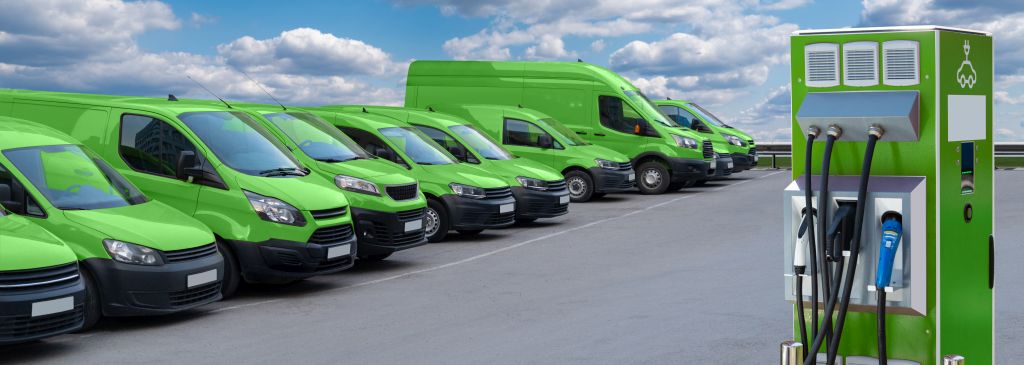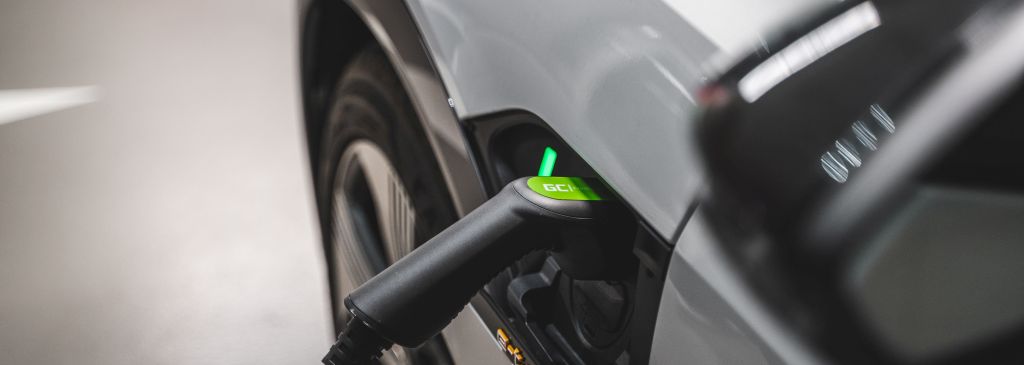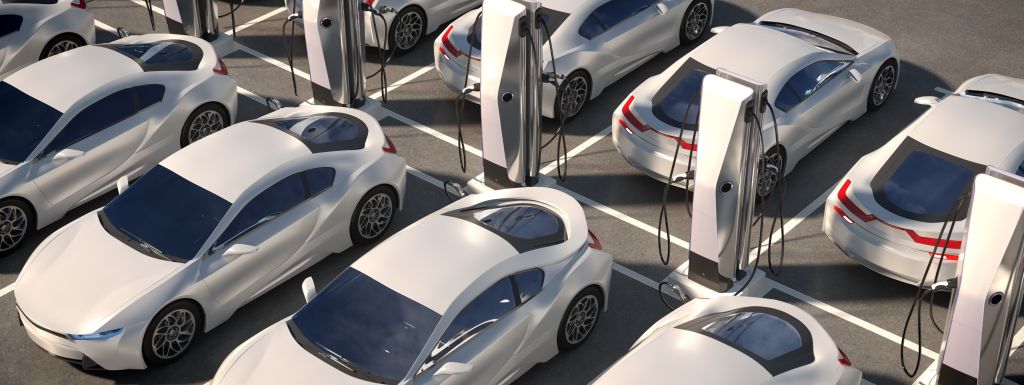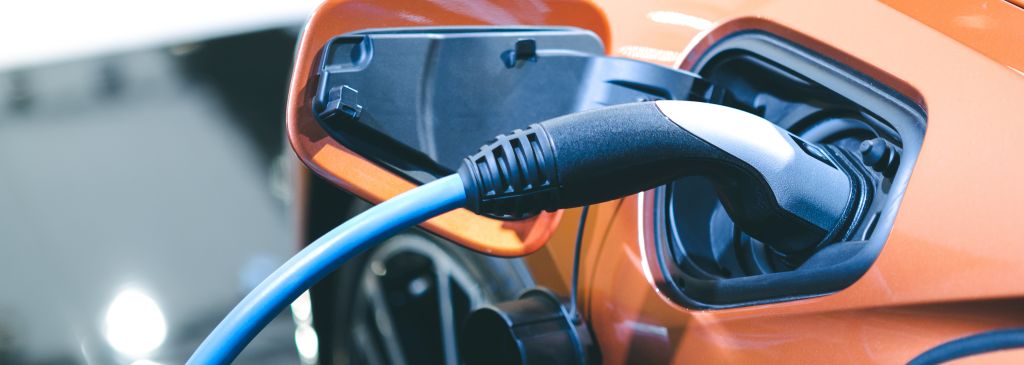Electric vehicles (EV) are the future of the automotive sector. Although they have only just started appearing in the streets, they are expected to become just as popular as traditional cars with internal combustion engines. Considering the current issue of air and environment pollution, this is a highly desirable direction of civilisational development. Would you like to join the green revolution? Explore our comprehensive guidebook, which will show you the basic information about electric vehicles – and maybe it will help you decide to buy your first electric car.
In this article you will find out:
- why electric vehicles are becoming increasingly popular,
- how to charge an EV,
- how to use an electric car on a daily basis
- what do you have to remember when buying your first electric car?
The origins of electric cars
Unbelievable as it may seem, an electric car is not a modern invention. Vehicles powered by electricity were first created in the late 19th century, which is more or less when first fuel-powered cars appeared. What is interesting, both were equally popular at that time. The situation changed when the production of cars with fuel-powered and diesel engines became cheaper.
Although electric vehicles were still constructed – especially when the technology was boosted after the invention of a transistor – their mass production only started in mid-1990s. This is when EV1 General Motors premièred and first hybrid cars were launched – including the incredibly popular Toyota Prius. But the real revolution was to commence a decade later, when Tesla started working on their Roadster model, which could cover more than 300 km on a single charge! Year 2009 saw the arrival of Nissan Leaf, one of the most popular EVs in the world.
The contemporary growth of the EV market is primarily a response to high environment pollution. If cars with internal combustion engines were replaced by EVs, a large proportion of harmful substances in the air could be eliminated.

What are the advantages of electric cars?
The environment-friendly aspect of electric cars means this kind of vehicles in becoming increasingly popular nowadays. It’s enough to look at the legal provisions implemented in the European Union or in China, where the electrification of the automotive sector has been gradually progressing since the early 21st century. The purpose is to limit the emission of harmful substances.
Fuel-powered cars must conform to rigorous norms, while the manufacturers and owners of EVs enjoy more and more benefits. Depending on the country and the mandatory law, they may obtain a VAT refund, a range of subsidies or a discount on car insurance. It’s also good to mention the growing number of the so called green zones, where only environment-friendly cars are allowed, as well as the permit to use bus lanes or special parking spaces.
Apart from legal amenities, an electric car has a range of advantages resulting from its construction. First of all, it is rather economical. Charging your car with electricity is cheaper than filling up with fuel. What is more, an EV doesn’t have a container with a flammable substance, so it’s definitely a safer choice than a fuel-powered car. Plus, electric engines are not as noisy as traditional fuel-powered ones.

Charging an EV
It might seem that electric vehicles are a perfect solution, with absolutely no drawbacks. And it is so, unless you’re planning to cover a longer distance. An average driver covers ca. 30 kilometres a day. This is a distance a standard EV can easily handle. But if you’re going to drive 300 km on a single day, you will have to pause to recharge the battery.
And this might be a problem at the moment. The infrastructure for electric vehicles still leaves a lot to wish for, although it’s growing as we speak. With time, there will be more charging stations, so you will be able to replenish the battery during your lunch break. But as it is, you’re well advised to explore the location of charging points before you start your journey. On a daily basis, you can recharge your car at home or use one of the public stations. What exactly are your options?
Charging an electric car at home
The good news is that you don’t really need a special infrastructure to recharge your EV at home. All you need is an EV cable (sold together with the car or a replacement cable). You can use it to connect the car battery to the regular socket in the wall or to a three-phase socket. This solution has a disadvantage, though: the charging process might take up to 20 hours, because the cable is fed with alternating current and converts it to direct current. In order to speed up the process, you can mount a wallbox on the garage wall.

Charging an EV at a fast charging station
Replenishing the car battery at a station will me much faster, because a station provides direct current. The fastest points have a power of up to 100 – 300 kW, although such points are still few and far between. In the future there will be more of them – a fast charging station might become the most popular charging option among the owners of EVs. At the moment, most charging stations have a power of about 50 kW.
Charging an EV in the public space
Slower charging stations (but still faster than charging your EV from a regular socket) are sometimes seen in the cities. They have a power of about 11 – 22 kW, so you can use this opportunity to recharge your car as you park it to go shopping, go to a restaurant or while you’re at the gym. Local authorities are now doing their best to come up with more of such charging points, and the currently implemented legal reforms mean the investors will have to include charging stations in their real estate projects. You can also arrange to have your own charging point at home and mount a modern wallbox.

What do you have to keep in mind while driving an electric car?
The first thing you have to remember is the range. At the moment, it’s anywhere between 250 and 550 km. When planning a journey, you need to make sure you have ample energy to cover the desired distance. See whether you can find charging stations along the route and make sure you can stop there to replenish the battery. While driving in the city, you don’t really have to worry about the battery running low. You have many charging points in the urban space. Besides, your car will recover some of the energy during regenerative braking, which might help boost its range.
It’s good to consider the elements of an EV which require regular maintenance. Fortunately, electric cars have fewer components that a traditional fuel-powered car. This means the risk of a breakdown or damage is considerably lower. Primary maintenance involves the replacement of the battery cooling liquid. It’s essential in order for the battery to work properly. The coolant usually needs to be replaced once in 4 years. You also need to remember to replace the transmission oil and to take proper care of the braking system.
One thing is for sure: you need to pay special attention when using an EV in winter. Batteries generally don’t like low temperatures – EVs are no exception. According to the statistics, the effectiveness of the car battery may be up to 20% lower in winter. That’s why it’s good to remember about a few basic procedures to support your EV battery. First of all, connect it to the source of electricity whenever you get the chance. This serves to maintain the proper temperature of the battery, which means the charging process will be more effective. Secondly, try turning down the heating in the driver’s cockpit – this might boost the range of your electric car in winter. Also, make sure you park your car in the right places. In order to prevent the battery from cooling down, leave your car in sunny places, preferably between buildings.

What do you have to remember when buying your first electric car?
If you want to buy your first electric car, there are a few important things you should keep in mind. First of all, think of how you’re going to charge it. If you use a car regularly and you have the opportunity to recharge it overnight, there should be no problem with everyday use. But if you want to cover long distances rather frequently, you may want to consider a wallbox installed e.g. in your garage.
When choosing an EV you need to consider its technical parameters. Electric cars come with different battery capacity, which directly affects the range. The manufacturers are doing their best to impress the drivers, so the Li-Ion batteries usually have a capacity of 20 up to 100 kWh. Remember that apart from standard EVs you also have a choice of hybrid cars or hydrogen vehicles. The former partially use the fuel engine and are rather economical. The latter are powered by hydrogen, but this is an expensive and rare solution.
Charge your EV with Green Cell!
Each electric car requires high quality charging cables. If you want to make the most of your car battery, choose cables available in our online store. You will find accessories designed for the most popular EVs, such as Nissan Leaf or Tesla. You may also be interested in one of the high-performing wallboxes. It’s an easy and effective way to recharge your EV in a fast and convenient way!
Veronica Jones
Related posts
Most viewed entries
- Electricity in a camper van on holiday – a conundrum easily solve
- Off-grid installation on a plot. Is it worth it?
- Charging your electric car at home without a wallbox
- Inverter – what it is and what it is used for
- Zero VAT on energy storage in the UK possible soon
- Greece sets aside €200 million for photovoltaic subsidies!

